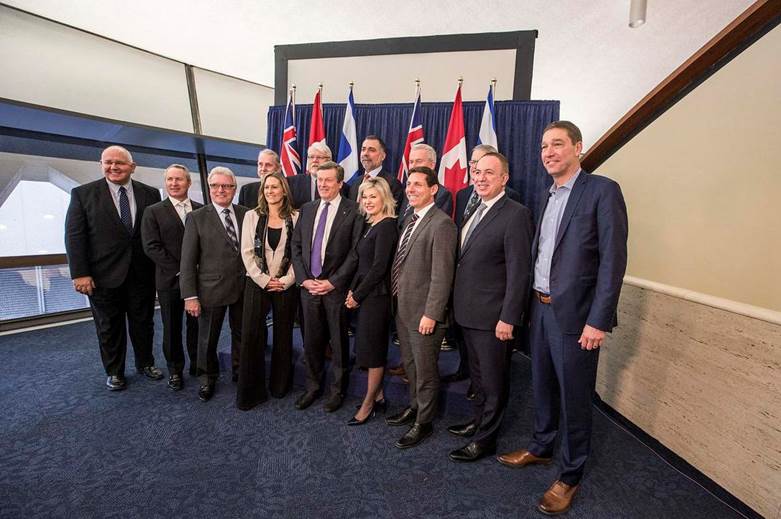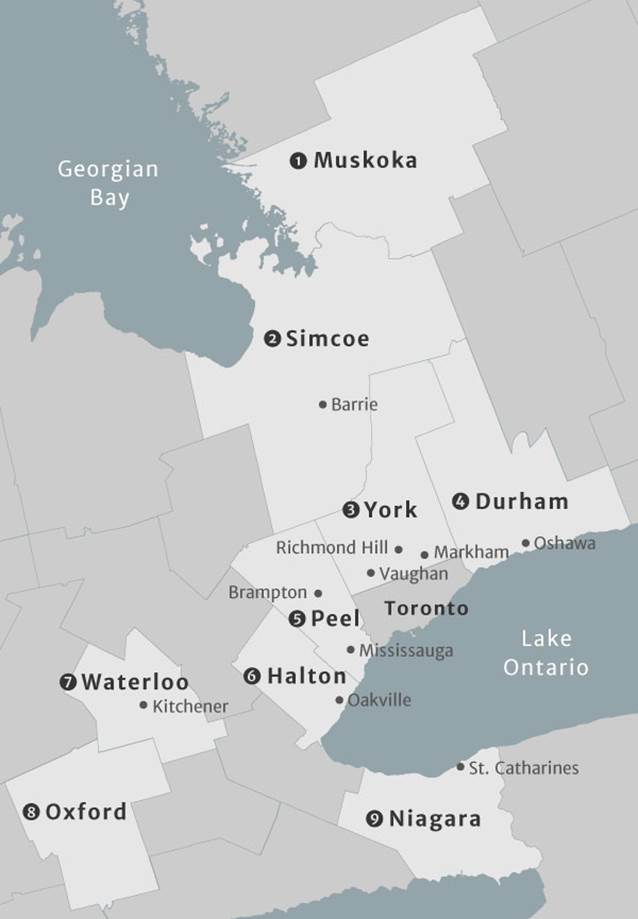
Questions and concerns about review of Ontario’s regional governments
Thestar.com
Jan 15, 2019
May Warren
The Ontario government said Tuesday that it will review the governance of eight regional municipalities and the County of Simcoe in a move to cut red tape and find efficiencies.
The review will be conducted by Michael Fenn, a former deputy minister and chief executive officer of Metrolinx, and Ken Seiling, the former chair of Waterloo region.
Mayor John Tory was hosting his counterparts from across the Greater Toronto-Hamilton Area on Tuesday when the province announced a review of Ontario’s regional governments.

Mayor John Tory was hosting his counterparts from across the Greater Toronto-Hamilton Area on Tuesday when the province announced a review of Ontario’s regional governments. (ANDREW FRANCIS WALLACE / TORONTO STAR)
It will encompass 82 municipalities in the regions of Halton, York, Durham, Waterloo, Niagara and Peel, as well as Muskoka District, Oxford County and the County of Simcoe.
The news was met with a mixture of enthusiasm and apprehension across the province, and lots of unanswered questions.
Here’s a look at what we know so far:
What does it mean?
The province was short on details, but clear the goal is to find ways to improve residents’ access to services while cutting duplication and saving money.
Urban designer Ken Greenberg said he has “no idea,” what it will look like, but he has heard these buzzwords before.
“We heard this kind of language during the Harris government, which led to the amalgamations -- not only the amalgamation of Toronto, but many of the other amalgamations around the province,” he said.
“Efficiency, which is the catch phrase here, can be interpreted as frictionless administration, and large scale, which often leads to amalgamation.”
What form could amalgamation take?
Some services in these municipalities are already centralized. Transit, police, emergency services, water, sewer, and community services are already centralized in York Region, for example, said regional chairman and CEO Wayne Emmerson.
The review could recommend that more be centralized or that entire regions be brought together under one government, such as Etobicoke, Scarborough, East York, York, North York and the old city of Toronto were in 1998, Greenberg said.
Some services, like regional transportation, “transcend local boundaries,” but the differences between parts of the regions under review are so great that “you keep running into situations of one size doesn’t fit all,” he added.
“And I think amalgamated Toronto suffers from that, I think there’s been a loss of a sense of access to local City Hall.”
What could be the benefits of the review?
Peel Region chair Nando Iannicca said he welcomes the analysis.
Iannicca is hoping for a “full and fair airing of what it is exactly we’re trying to fix,” as often the red tape and delays are at the provincial level.
For example, he said, municipalities often had to wait for hearings with the Ontario Municipal Board, which has now been replaced by the Local Planning Appeal Tribunal.
He hopes the discussion can be “frank and open” and look at all of these areas, not just processes of cities and towns.
York Region’s Emmerson said he also welcomes the chance for a review but wants to make sure his region “has a seat at the table.”
“Can we do things better? I’m sure we can,” he said.
What are the concerns?
Cherise Burda, executive director of Ryerson University’s City Building Institute, says she worries that if municipalities in these regions are amalgamated, the effect will be to dilute local government.
“You kind of just harmonize places which aren’t the same. That can result in a homogenous approach to places that need different treatment,” she said.
Denser areas like, for example, downtown Mississauga, have different interests than more suburban areas in Peel Region.
“The more that you amalgamate, the more that you weaken local decision-making, the more that you get decision-making further from the local people.”
That’s what happened in Toronto, not only under amalgamation, but when the province chopped the number of local councillors almost in half last year, she said.
When people making decisions have no sense of the place they’re making decisions about “ it can lead to abstractions, where we get quite far away from the reality,” added Greenberg.
“The tension that I worry about, since we don’t know where this is going, but I think it’s fair to talk about this, is between administrative efficiency and access to local government, and the principle of local democracy and having people engaged in making decisions about the places where they live,” he said.
Emmerson is also “not a believer in amalgamation.”
Residents, he says, want a local government and the connection to politicians that comes with it.
“They want to see the mayor at the grocery store.”
Regions under review

